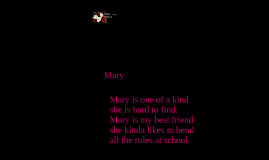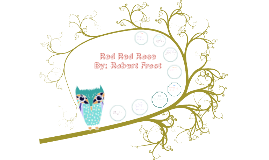Red Red Rose
Transcript: Spanish He was born on 25 January 1759 in the village of Alloway. Despite his parents were both farmers, he received a relatively good education and began to read avidly. The works of Alexander Pope, Henry Mackenzie and Laurence Sterne fired Burns's poetic impulse and relationships with the opposite sex provided his inspiration. His attentions towards the passions of poetry, nature, drink and women which would characterise the rest of his life. At just 27, Burns had already become famous across the West Indies with poems such as “To a Louse”, “To a Mouse” and “The Cotter's Saturday Night”. He moved to Edimburgh and in just 18 short months, Burns had spent most of the wealth from his published poetry, so in 1789 he began work as an Excise Officer in Dumfrie. His increasingly radical political views influenced many of the phenomenal number of poems, songs and letters he continued to pen, including such famous works as “For a' that and a' that”. English INDEX (índice) Scottish A red, red rose O my Luve's like a red, red rose That’s newly sprung in June; O my Luve's like the melodie That’s sweetly play'd in tune. As fair art thou, my bonnie lass, So deep in luve am I: And I will luve thee still, my dear, Till a’ the seas gang dry: Till a’ the seas gang dry, my dear, And the rocks melt wi’ the sun: I will luve thee still, my dear, While the sands o’ life shall run. And fare thee well, my only Luve And fare thee well, a while! And I will come again, my Luve, Tho’ it were ten thousand mile "Red Red Rose" is a love poem written to be sung. Robert Burns based it on a folk version of a song he heard on his travels. Burns completed the poem in 1794 in an English dialect called Scots for publication in collections of traditional Scottish ballads. INTRODUCTION Translation Robert Burns was was a Scottish poet and lyricist. He is widely regarded as the national poet of Scotland and is celebrated worldwide. He is the best known of the poets who have written in the Scots language, although much of his writing is also in English and a light Scots dialect. He also wrote in standard English, and in these writings his political or civil commentary is often at its bluntest. He is regarded as a pioneer of the Romantic movement, and after his death he became a great source of inspiration to the founders of both liberalism and socialism, and a cultural icon in Scotland. The poet loves his girlfriend as deeply as she is beautiful. He will love her till all the seas become dry and the sun melts the rocks. He loves her as long as he lives. Now he says good-bye to his beloved and promised to come even from ten-thousand miles away. Robert Burns’ BIOGRAPHY The hard work this new job entailed, combined with the toil of his earlier life and dissolute lifestyle began to take their toll on Burns's health. He died on 21 July 1796 aged just 37 and was buried with full civil and military honours on the very day his son Maxwell was born. A memorial edition of his poems was published to raise money for his wife and children. In his honor, it is hold a celebration called “Burns Supper”. O, my love is like a red, red rose, That is newly sprung in June. O, my love is like the melody, That is sweetly played in tune. As fair are you, my lovely lass, So deep in love am I, And I will love you still, my Dear, Till all the seas go dry. Till all the seas go dry, my Dear, And the rocks melt with the sun! O I will love you still, my Dear, While the sands of life shall run. And fare you well, my only Love, And fare you well a while! And I will come again, my Love, Although it were ten thousand mile! O, my love is like a red, red rose, That is newly (1)=_______________ in June. O, my love is like the melody, That is (2)=_______________ played in tune. As (3)=____________ are you, my lovely (4)=____________, So deep in love am I, And I will love you still, my (5)=___________, (6)=_________all the seas go (7)=__________ Till all the seas go dry, my Dear, And the rocks (8)=___________ with the sun! O I will love you still, my Dear, While the (9)=____________ of life shall (10)=______________ And fare you well, my (11)=____________ Love, And fare you well a (12)=____________! And I will come again, my Love, Although it were ten (13)=________________ mile! Una roja, roja rosa Una rosa roja, roja Oh, mi amor es como una rosa roja, roja, que acaba de abrirse en junio, oh, mi amor es como la melodía que se toca con dulzura y armonía tan hermosa sois, mi preciosa pastora, estoy tan enamorado de vos, y todavía os amaré, amada mía, cuando los mares se sequen: cuando los mares se sequen, amada mía, y las rocas se derritan al sol, todavía os amaré, amada mía, mientras la arena de la vida corre. Y me despido de vos, mi único amor, y me despido de vos por un momento, y volveré, amada mía, aunque diez mil millas nos separen Red Red Rose -Introduction -translation ·Scottish ·English ·Spanish -Biography of Robert Burns -Summary of the poem SUMMARY

















